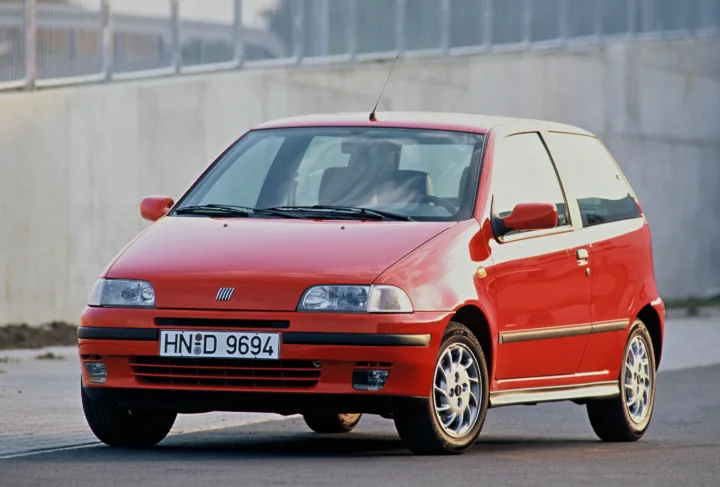Punto: the guiding star for Fiat since 1995
The history of Fiat Punto (project 176) dates back to 1993, when the brand's first model with this name was presented to the media in Turin on August 31 and in Frankfurt on September 7, marking the beginning of an entirely new generation of compact cars piese auto online.

The car, designed by Giorgetto Giugiaro, was the direct successor to the Uno, and was entrusted with the responsible mission of repeating its extraordinary success. It not only managed to live up to all expectations, but in 1995 it was even elected "Car of the Year". For its production, a completely new factory was built in Melfi (Potenza), which at the time was one of the most modern industrial sites in the world, and the use of completely new technologies and processes led to the emergence of the now well-known concept of the "integrated factory". Later, the car also began to be assembled in Mirafiori (Turin) and Termini Imerese (Palermo).
Since the beginning of its industrial career, the Fiat Punto has been available in two main versions – with 3 or 5 doors, 6 trim levels, 6 engines and 14 body colours, combining innovative design with the most spacious cabin in its category. Compared to the Uno, the Punto is larger and more comfortable, and also has a larger boot of 275 litres, which becomes 1080 when the rear seats are removed. The original large, vertically positioned rear lights and the large air duct on the front bumper stand out on the car's clean and well-balanced design. At the same time, the interior is very comfortable, and includes features that were previously reserved only for cars in higher segments.
The engine options offered are: 1.1 Fire with 54 hp, 1.2 with 60 hp, 1.2 with 75 hp, 1.6 engine with 90 hp, the GT version with a 1.4-liter Turbo engine with intercooler, which reaches a maximum power of 136 hp, and finally the 1.7-liter turbodiesel TD version with 70 hp. All versions have front disc brakes and rear drum brakes (only in the Punto GT all brakes are disc, the front ones are ventilated), McPherson front suspension. In addition, each version includes one or more equipment levels (S, ED, SX, 6 Speed, ELX and GT).
In 1994, the Bertone-designed Punto Cabrio appeared, and the range was enriched with two more equipment levels: the 60 S with a 1.2 engine of 60 hp and the 90 ELX with a 1.6 engine of 90 hp.
In the following years, Fiat introduced many other variants of the Punto, such as the HSD, which stood out with its safety accessories, or the Selecta version, which was designed for city driving and was equipped with an electrically controlled continuously variable transmission (ECVT). At the end of 1994, the Punto D debuted with a 1.7-liter diesel engine, and the following year the Sporting version with a 1.6-liter engine combined with a low gear ratio.
In 1997, the range was updated with minor aesthetic changes, but remained as accessible as ever. New features included more body colour options and the introduction of new interior trims and seat fabrics, bringing the model range to 29. In May 1997, at the Barcelona Motor Show, the Punto debuted with the new 16-valve, 1.2-litre Fire engine with 85 hp. Finally, in 1998, Fiat introduced the new Punto cabriolet range, as well as three new trim levels: Sole, Star and Stile. These were the latest updates to an exceptional model, which passed the baton to the new Punto in July 1999. A total of around 3,400,000 units were produced from the first series of the model.
- 2025-12-09 - Renault 25: a sense of luxury from the 80s
- 2025-12-08 - Creative freedom in socialist Poland: the cross between Fiat 126P and Polonez
- 2025-12-06 - Toyota GR GT: Supra's bigger "brother" comes with a V8 engine
- 2025-12-05 - Opel OSV 40: the battle for safety began half a century ago
- 2025-12-04 - 60 years since the premiere of the first Opel GT
- 2025-12-03 - The Fabia lacks subtlety
- 2025-12-02 - The big test: what are the best winter tires for 2026?
- 2025-12-01 - Used car inspection: Porsche 911 (992)
- 2025-11-30 - Nikola Tsolov with a phenomenal performance in his first Formula 2 start
- 2025-11-29 - Nikola Tsolov with an impressive result in his first Formula 2 qualifying












